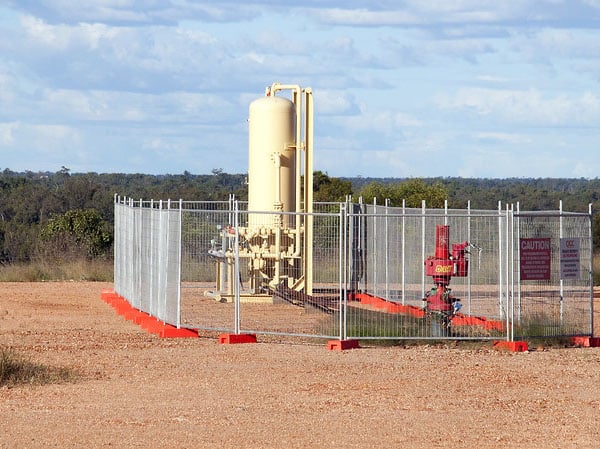Stress Distribution Through Strata
From its long history of stress measurement in sedimentary strata Sigra has definitively shown that its tectonic strain model describes the state of stress in 70% of cases, the other cases being complex due to active faulting, unconformities or extreme folding.
The tectonic strain is the lateral strain to which a sequence of strata are subject.
It is derived by measuring the stress at various depths in the sequence and then subtracting from these the lateral stress that would be caused by the self weight of the rock mass above in a zero lateral strain environment. This is a function of rock mass and Poisson’s ratio.
The remaining horizontal stress is that caused by tectonic effects. The values of these varies depending on the stiffness of the rock in question. It is generally found that the tectonic strain is even or varies monotonically through the sequence.
This concept is shown in Figure 1

The shallower values of tectonic strain frequently reflect local structures such as faulting and folding and may not reflect tectonic plate effects.
Regional Stress Distributions
Sigra has on several occasions produced regional stress distribution models based on data from numerous sources, including those undertaken using its IST overcore tool, hydrofracture testing, and borehole breakout information. This information has been interpreted using the tectonic strain model which has been found to be adequate in the majority of cases.
However in some instances the tectonic strain model is complicated by faulting. In these instances Sigra has used seismic information to examine the faulting regime and to interpret the variations in the stress regime on a regional basis.
Sigra can compare these interpretations with numerical models, which may contain faults and which are gravitationally loaded, followed by the application of representative tectonic strains. Unloading behaviour through erosion may also be modelled.
Stress Path With Fluid Removal
The state of effective stress within a reservoir is extremely important if the permeability of the formation is stress sensitive. Generally the lower the permeability of the formation the more sensitive to effective stress changes it is.
This is particularly the case for coals where an increase in effective stress of 3 MPa (435 psi) may lead to an order of magnitude drop in permeability.
Fluid withdrawal from the reservoir leads immediately to an increase in effective stress. In the case of coals and other carbonaceous reservoir rocks another effect takes place. When gas desorbs from the coal it tends to shrink, which leads to a stress reduction. The two effects oppose each other.
The stress path is the term used to describe the changes in effective stress with fluid withdrawal.
Sigra models the stress path using as inputs:
Initial stress measurement from
Mechanical Properties
Absorption Behaviour
Using this information Sigra creates plots of the effective stress change that may be expected with fluid pressure reduction. An example of such a plot is given in the Figure 1. below.

Borehole Stress
Sigra can model the effects of effective stress on borehole stability. This can be used to determine whether a borehole will fail during drilling or production. It may also be used in the interpretation of the stress field from borehole breakout information.
The level of model that Sigra can use for this purpose varies from a straightforward analytical model of stress around a circular opening in an elastic media, to that taking full account of the stress strain characteristics of the formation into the post elastic range. In practice the latter model is seldom justified.
Slope Stability
Sigra uses limit state models to assess most slopes. It is found that these give adequate solutions, and that the additional effort in using finite element analysis is seldom justified.
The two dimensional limit state soil slope model is based on a Janbu type solution.
It is supported by a three dimensional version, which is especially useful in determining the zones of the potential failure that are most in need of attention. This version may be used integrally with the Sigra groundwater model for inflow on a slope.
The model may be run on its own or with real time groundwater inputs to yield a real time factor of safety for a slope.
Sigra also has a number of wedge and planar failure models for use on rock slopes.
In addition the company has developed a model to determine the spacing of sub horizontal drains in a slope.
Excavation Modelling
Sigra has a finite element solution package that can model sequential excavations in rock. The key to Sigra’s models is a correct initial stress distribution, generally based in sedimentary strata on gravitational load followed by tectonic strains.
















